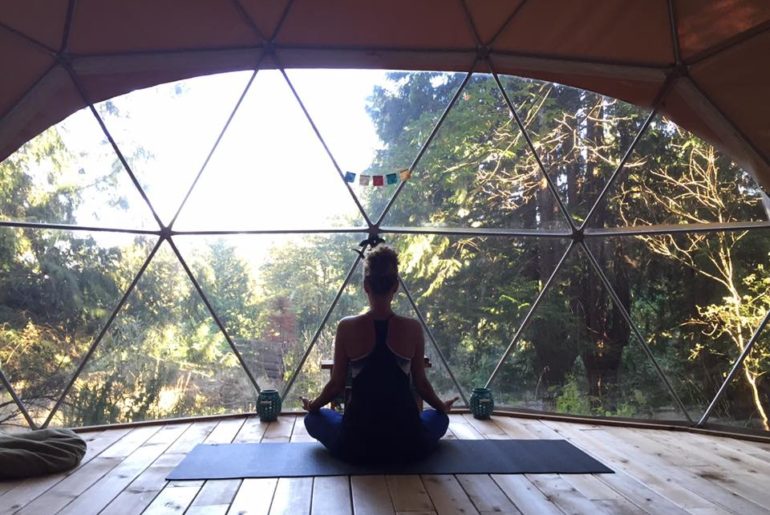When I hear the word “mindfulness”, I think of the scene in Eat, Pray, Love where Julia Roberts’ character attempts to meditate for the first time. She folds her legs, pinches her thumbs and forefingers together, closes her eyes, and says to herself, “Ok, simply empty your mind. You’re going to sit here for an hour of your life without moving.” Then after only a minute, she says, “Oh my god why is this so hard, kill me!” and flops over onto her face in frustration.
“Mindfulness” has definitely become a buzzword – often used and frequently misunderstood. In fact, if you type “mindfulness” into Google, you’ll get over 76 million results. But does mindfulness actually work, or is just another fading fad?
The Merriam-Webster Dictionary defines mindfulness as, “the practice of maintaining a nonjudgmental state of heightened or complete awareness of one’s thoughts, emotions, or experiences on a moment-to-moment basis.” In other words, it’s about learning how to step back, recognize what is happening around you, identify your feelings and emotions that occur as a result, and find a suitable reaction based on those factors.
Does mindfulness actually work, or is just another fading fad?
While mindfulness has been around for thousands of years, it has become a scientifically-proven solution for many problems faced by kids in more recent years. Through the practice, parents and teachers have discovered that it calms kids, keeps them focused, and greatly reduces symptoms associated with ADHD, anxiety and stress.
Extensive research has been conducted, and the practice has generated such powerful results, that mindfulness is becoming an integral part of the public school system.

In Baltimore, a school has replaced detentions with mandatory meditations, encouraging kids to engage in breathing exercises and meditation, teaching them how to calm down, re-centre, and talk through what happened, instead of sending them to sit in the principal’s office.
A non-academic, child-focused curriculum has been rolling out in schools across BC, known as Blingja (a portmanteau of ‘bling’ and ‘ninja’), a program that is helping to make classrooms a more peaceful and productive space for teachers and their students.
Designed with children in mind, the Blingja curriculum uses a series of tangible tools, visual cues, and breathing exercises, to calm kids, reduce their stress levels, and provide them with a deeper understanding of their emotions and how they react to real-world situations.
Built by a mother of two who has worked for both the Vancouver School Board and the Social Emotional Learning Centre, and implemented with feedback from parents, teachers, principals, occupational therapists, and doctors, this program has quickly spread to over 50 schools across Vancouver, and continues to grow rapidly as more and more professionals see the benefits of brain-based social emotional learning practices.
Mindfulness is positively impacting the way our teachers teach, and improving the learning environment for our children – and they don’t even have to sit cross-legged on the floor to enjoy the advantages of the proven practice. As parents, we should open our minds to mindfulness – and recognize that it is more medicine than malarkey for our kids.
This story originally appeared in my column in 24 Hours Vancouver newspaper on October 25, 2017.




